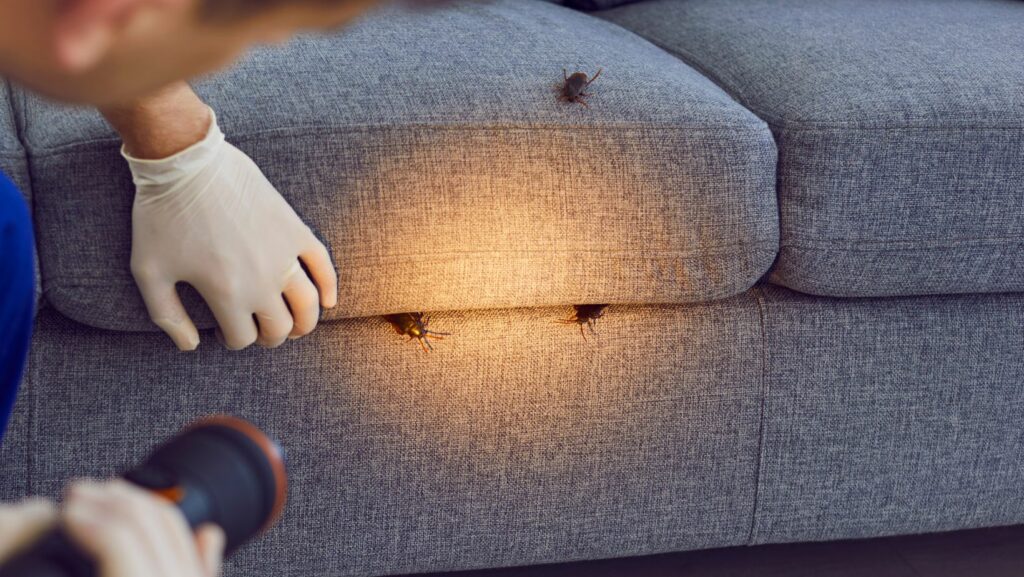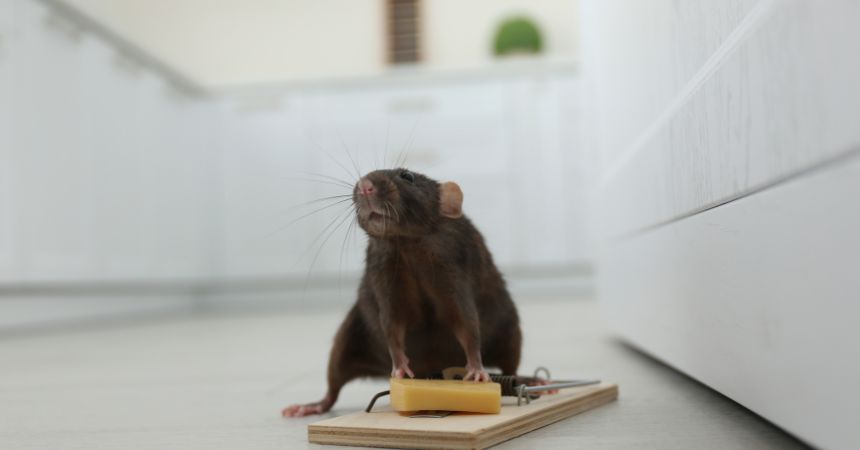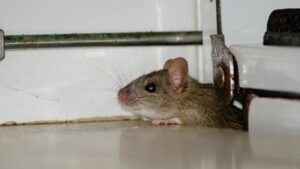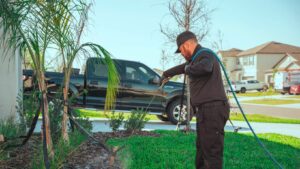Residential Pest Control – Keep Your Home Pest-Free
Expert Residential Pest Control Services for a Safe and Comfortable Home
At Taps Pest Control, we specialize in Residential Pest Control, providing homeowners with safe, effective, and long-term solutions to keep their homes pest-free. Whether you’re dealing with a current infestation or looking to prevent future pest problems, our expert team is here to help.

- Residential Pest Control
1.
Cockroach Treatment
- Eliminating cockroach infestations and preventing their return with proven pest control methods.
2.
Flea Control
- Targeted treatments to eliminate fleas from your home and protect your pets from infestations.
3.
Spider Removal
- Safe and effective spider control to keep your home free of unwanted arachnids.
In-Depth Guide to Residential Pest Control
Why Residential Pest Control is Essential

Pests are more than just a nuisance; they can pose significant health risks, compromise structural integrity, and create unsanitary living conditions. Proper Residential Pest Control is essential to maintaining a safe, comfortable, and pest-free home for your family.
Health Risks Associated with Household Pests
Many household pests carry diseases and allergens that can impact your family’s health. Common health risks include:
- Cockroach Allergies & Asthma Triggers: Cockroach droppings, shed skins, and saliva can trigger asthma and allergies, especially in children and individuals with respiratory conditions.
- Rodent-Borne Diseases: Mice and rats can transmit serious diseases such as Hantavirus, Salmonella, and Leptospirosis through their droppings and urine.
- Flea and Tick-Borne Illnesses: These pests can spread Lyme disease, Rocky Mountain spotted fever, and other infections to both humans and pets.
- Mosquito-Transmitted Viruses: Mosquitoes are vectors for diseases like West Nile Virus, Zika Virus, and Malaria, making proper pest control crucial in areas prone to infestations.
- Bacterial Contamination: Ants, cockroaches, and flies can contaminate food surfaces and storage areas, leading to foodborne illnesses.
Structural and Property Damage Caused by Pests
Beyond health concerns, certain pests can cause extensive damage to your home, leading to costly repairs:
- Termites: Silent destroyers that eat away at wooden structures, compromising the integrity of your home.
- Carpenter Ants: Unlike termites, carpenter ants do not consume wood but tunnel through it to create nests, leading to weakened foundations.
- Rodents: Rats and mice gnaw on electrical wiring, insulation, and plumbing, increasing the risk of electrical fires and water leaks.
- Silverfish: These pests damage books, wallpaper, and stored fabrics by feeding on starches found in paper and textiles.
- Bees and Wasps: While important pollinators, unmanaged colonies near homes can pose safety hazards, with aggressive behavior and potential structural damage due to hive expansion.
The Importance of Year-Round Pest Prevention
Pests are active throughout the year, making ongoing pest control crucial for home protection. Different pests emerge during different seasons:
- Spring & Summer: Increased ant, mosquito, and flea activity due to warm temperatures.
- Fall: Rodents and spiders begin seeking shelter indoors as temperatures drop.
- Winter: Cockroaches and silverfish thrive in warm indoor environments.
By scheduling Residential Pest Control services regularly, you can proactively prevent infestations before they become a major problem, ensuring your home remains pest-free all year long. Pests are more than just a nuisance; they can pose significant health risks and cause structural damage to your home. Proper Residential Pest Control ensures your living space remains safe and comfortable for your family.
Common Pests Found in Homes
Understanding the types of pests that commonly invade homes is essential for effective Residential Pest Control. Different pests pose varying risks, from property damage to health hazards. Identifying these pests early can help homeowners take preventive measures before infestations become severe.
Cockroaches
Cockroaches are among the most persistent household pests. They thrive in warm, humid environments and can spread bacteria like Salmonella and E. coli. Their droppings and shed skins can also trigger allergies and asthma attacks. Common species include:
- American Cockroach: Often found in basements and kitchens.
- German Cockroach: A smaller species that prefers warm, humid areas like bathrooms and under sinks.
- Oriental Cockroach: Known for its strong odor and preference for damp spaces.
Fleas & Ticks
Fleas and ticks commonly infest homes with pets, but they can also enter on clothing or through open doors. These pests cause itchy bites and can transmit diseases such as Lyme disease (ticks) and tapeworm infections (fleas). Key warning signs include excessive scratching in pets and small, dark specks (flea dirt) in bedding or carpets.
Spiders
While most spiders are harmless, some can be venomous, posing a threat to homeowners. Spiders often enter homes searching for food (insects) or shelter during colder months. The most common home-invading species include:
- House Spiders: Generally harmless and feed on other pests.
- Black Widows & Brown Recluse Spiders: Venomous species that can deliver painful and medically significant bites.
- Wolf Spiders: Large, fast-moving spiders that do not spin webs but hunt their prey.
Ants
Ants invade homes in search of food, particularly sweets and proteins. Some species, like carpenter ants, can cause structural damage by burrowing into wood. Other common household ants include:
- Odorous House Ants: Attracted to sugary foods, leaving behind a strong smell when crushed.
- Carpenter Ants: Burrow into wooden structures, potentially weakening foundations.
- Fire Ants: Deliver painful stings that can cause allergic reactions.
Rodents (Mice & Rats)
Rodents can be particularly destructive, gnawing on wiring, insulation, and stored food. They reproduce quickly, making infestations challenging to control. Signs of a rodent infestation include:
- Droppings near food sources and along walls.
- Gnaw marks on furniture, wires, and baseboards.
- Scratching sounds inside walls or ceilings.
Termites
Termites cause billions of dollars in property damage each year by silently eating through wooden structures. Homeowners should look for these warning signs:
- Mud tubes along foundations.
- Discarded wings near windows and doors.
- Hollow-sounding wood when tapped.
Mosquitoes
Mosquito infestations are common in homes with standing water sources, such as birdbaths or clogged gutters. These pests can transmit serious diseases like West Nile Virus, Zika Virus, and Malaria. Preventing mosquito breeding by eliminating stagnant water is key to controlling infestations.
Silverfish
These small, wingless insects thrive in damp areas like basements and bathrooms. They feed on paper, clothing, and starchy materials, making them a nuisance for homeowners with books, documents, or stored fabrics.
By recognizing the signs of these common household pests, homeowners can take proactive steps toward effective Residential Pest Control. Regular inspections, preventive treatments, and professional pest control services help maintain a pest-free living environment. Understanding the types of pests that commonly invade homes can help with prevention and early intervention. Some of the most common household pests include:
- Cockroaches: Known for spreading bacteria and allergens.
- Fleas & Ticks: Can infest homes with pets, causing itchy bites and transmitting diseases.
- Spiders: Some species pose a venomous threat to humans.
- Ants: Can invade kitchens, contaminating food supplies.
- Rodents: Mice and rats can cause structural damage and spread diseases.
How to Prevent a Pest Infestation
Preventing pests before they become a problem is key to maintaining a healthy home. By taking proactive steps, homeowners can reduce the risk of infestations and ensure a pest-free environment. Here are some essential strategies to prevent pest infestations effectively:
Seal Cracks and Entry Points
Small gaps and cracks around windows, doors, and foundation walls provide easy access for pests. Use caulk or weather stripping to seal any openings, and install door sweeps to block gaps beneath exterior doors. Pay extra attention to attic vents, crawl spaces, and utility entry points where pests often find their way inside.
Maintain Cleanliness and Hygiene
Keeping your home clean is one of the simplest yet most effective ways to prevent pests. Food crumbs, spills, and unsealed trash can attract ants, rodents, and cockroaches. To minimize the risk:
- Wipe down kitchen counters and dining areas after meals.
- Sweep and vacuum regularly to eliminate food debris.
- Take out the garbage daily and store it in a sealed container.
- Avoid leaving dirty dishes in the sink overnight.
Store Food Properly
Pests like ants, cockroaches, and rodents are drawn to food sources. To prevent them from invading your kitchen:
- Keep dry goods such as rice, pasta, and cereal in airtight containers.
- Store pet food in sealed bins instead of leaving it out overnight.
- Avoid leaving fruits and vegetables uncovered on countertops.
- Clean pantry shelves regularly to remove spilled food and crumbs.
Fix Leaks and Eliminate Moisture
Many pests, including cockroaches, silverfish, and termites, thrive in moist environments. Eliminating excess moisture in and around your home helps deter infestations:
- Repair leaky pipes, faucets, and air conditioning units promptly.
- Use dehumidifiers in damp areas such as basements and crawl spaces.
- Ensure proper ventilation in bathrooms, kitchens, and attics.
- Clean and unclog gutters to prevent standing water near your home's foundation.
Keep Outdoor Areas Well-Maintained
The exterior of your home plays a crucial role in preventing pests from gaining access. Maintain a tidy outdoor environment by:
- Trimming overgrown bushes, trees, and shrubs near windows and doors.
- Storing firewood and lumber at least 20 feet away from your home.
- Removing leaf litter, debris, and compost piles that could serve as pest nesting areas.
- Ensuring proper drainage to prevent stagnant water, which attracts mosquitoes.
Use Pest-Repellent Landscaping
Strategic landscaping can help deter pests naturally. Consider incorporating plants that repel insects, such as lavender, citronella, mint, and marigolds. Additionally, maintaining a barrier of gravel or mulch around your home’s foundation can discourage crawling pests from getting too close.
Properly Store and Dispose of Trash
Garbage is one of the biggest attractants for pests. Make sure you:
- Use tightly sealed trash bins to prevent rodents and insects from accessing food waste.
- Keep outdoor trash cans away from your home and clean them regularly.
- Dispose of organic waste properly to avoid attracting flies and other pests.
Schedule Routine Pest Inspections
Even if you follow all the preventive measures, scheduling regular professional pest inspections is the best way to ensure long-term protection. A professional pest control expert can:
- Identify potential problem areas before infestations occur.
- Apply barrier treatments to keep pests from entering your home.
- Offer tailored solutions based on the specific pests common to your region.
By following these preventative measures, homeowners can minimize the likelihood of pest infestations and maintain a clean, safe, and comfortable living space. If you suspect a pest problem, Taps Pest Control offers expert Residential Pest Control services to keep your home protected year-round. Preventing pests before they become a problem is key to maintaining a healthy home. Here are some tips to reduce the risk of infestations:
- Seal Cracks and Entry Points: Ensure doors, windows, and walls are properly sealed to block pest access.
- Maintain Cleanliness: Regular cleaning, especially in kitchens and food storage areas, helps deter pests.
- Store Food Properly: Keep all food in sealed containers to prevent attraction.
- Fix Leaks and Eliminate Moisture: Many pests thrive in damp environments; fix leaks and use dehumidifiers where necessary.
- Keep Outdoor Areas Well-Maintained: Trim vegetation and remove debris near your home to reduce hiding spots for pests.
Effective Treatments for Residential Pest Control
At Taps Pest Control, we offer a variety of advanced treatment methods to effectively eliminate pests and prevent their return. Our solutions are tailored to address specific pest problems while ensuring the safety of your family and pets. Below are some of the most effective treatments used in Residential Pest Control:
Baiting Systems
Baiting is one of the most effective strategies for controlling common household pests like ants, cockroaches, and rodents. Our bait stations use attractive food sources laced with slow-acting insecticides that pests carry back to their nests, effectively eliminating entire colonies over time.
- Ant Baiting: Targets worker ants that transport poison to the colony, resulting in total eradication.
- Cockroach Gel Baits: Designed to lure and kill roaches hiding in cracks and crevices.
- Rodent Bait Stations: Secure, tamper-proof stations that attract and eliminate mice and rats while preventing accidental ingestion by pets or children.
Eco-Friendly Sprays
For homeowners looking for safer alternatives, we offer eco-friendly pest control sprays that effectively target pests without harming beneficial insects or the environment. Our treatments are safe for use around children and pets and include:
- Botanical-Based Sprays: Made from plant-derived ingredients to naturally repel pests.
- Residual Barrier Sprays: Create long-lasting protection against crawling insects.
- Pet-Safe Flea and Tick Sprays: Applied to homes and yards to keep pests away from pets and family members.
Barrier Treatments
Barrier treatments help keep pests from entering your home by creating a protective layer around its perimeter. These treatments include:
- Foundation Treatments: Applied along the base of your home to prevent ants, spiders, and cockroaches from entering.
- Yard Perimeter Sprays: Treats outdoor areas to control ticks, mosquitoes, and fleas before they reach your home.
- Crawl Space and Attic Treatments: Targets pests that nest in dark, hidden areas.
Traps and Monitoring Systems
For continued pest management, we utilize advanced traps and monitoring systems to detect and eliminate pests before infestations become severe. These include:
- Rodent Traps: Snap traps, glue traps, and live catch traps for humane rodent removal.
- Insect Light Traps: Effective against flies, mosquitoes, and other flying insects.
- Termite Monitoring Stations: Installed around the property to detect termite activity before significant damage occurs.
Heat and Steam Treatments for Bed Bugs
Bed bug infestations require specialized treatments. Our heat and steam treatments effectively eliminate bed bugs at all life stages, including eggs, without the need for harsh chemicals.
- High-Temperature Heat Treatments: Raise indoor temperatures to lethal levels for bed bugs.
- Steam Applications: Applied to mattresses, furniture, and carpets to kill bed bugs on contact.
Fumigation for Severe Infestations
For extreme pest infestations, fumigation is sometimes the most effective solution. This process involves sealing off a home or structure and introducing a controlled pesticide gas that penetrates deep into walls, furniture, and flooring to eliminate pests at all life cycle stages.
- Whole-Home Fumigation: Used for widespread termite or bed bug infestations.
- Spot Fumigation Treatments: Targeted applications for localized infestations.
Preventative Pest Control Programs
Beyond eliminating existing pests, our preventative pest control programs help homeowners maintain long-term protection through scheduled treatments and proactive measures.
- Monthly Pest Control Plans: Ongoing treatments to keep seasonal pests at bay.
- Quarterly Preventative Services: Target common household pests year-round.
- Integrated Pest Management (IPM): A strategic approach that combines multiple methods for maximum effectiveness with minimal chemical use.
At Taps Pest Control, we customize our treatment plans based on the specific pest pressures in your home and surrounding environment. Our safe and reliable solutions ensure that you and your family can enjoy a pest-free home all year long.
- Baiting Systems: Effective for ants, cockroaches, and rodents.
- Eco-Friendly Sprays: Safe for families and pets while targeting pests effectively.
- Barrier Treatments: Prevents pests from entering your home.
- Traps and Monitoring Systems: For ongoing pest management and prevention.
Seasonal Pest Control – What You Need to Know
Pest activity varies throughout the year, with different seasons bringing unique challenges for homeowners. Understanding the seasonal patterns of pests can help you take proactive measures to prevent infestations before they become severe. Below is a breakdown of the most common pest issues by season:
Spring – The Awakening of Pests
As temperatures rise, many pests emerge from their winter hiding spots to seek food, water, and shelter. Some of the most active spring pests include:
- Ants: Begin forming new colonies and foraging for food, often invading kitchens and pantries.
- Termites: Spring is the peak swarming season for subterranean termites, making this a crucial time for termite inspections and prevention.
- Mosquitoes: Start breeding in standing water, leading to an increase in populations as the weather warms.
- Spiders: Become more visible as they emerge from their winter retreats to hunt for food.
Summer – Peak Pest Season
Summer is when many pests reach their peak activity due to the warm weather and increased humidity. Common summer pests include:
- Mosquitoes: Thrive in warm, humid environments, making outdoor spaces a prime breeding ground.
- Fleas & Ticks: More active during summer months, often hitching rides on pets and humans.
- Wasps & Bees: Build nests in eaves, trees, and other outdoor structures, leading to an increased risk of stings.
- Cockroaches: Seek out cooler, moist areas inside homes as outdoor temperatures rise.
Fall – The Invasion Begins
As the temperatures drop, many pests begin seeking shelter indoors to escape the cold. The most common fall invaders include:
- Rodents (Mice & Rats): Start moving indoors in search of warmth and food.
- Spiders: Look for dark, undisturbed places to build their webs and lay eggs.
- Stink Bugs & Boxelder Bugs: Cluster around windows and doors, attempting to enter homes for winter.
- Crickets: More active in fall and often invade basements and garages.
Winter – The Silent Threat
While some pests become less active during winter, others move indoors to survive the cold months. Homeowners should be on the lookout for:
- Rodents: Mice and rats remain active inside homes, chewing on wires and contaminating food.
- Cockroaches: Continue thriving in warm, humid areas like kitchens and bathrooms.
- Silverfish: Seek out dark, damp areas such as basements and attics.
- Bed Bugs: Can remain active year-round, often spreading through travel and infested furniture.
How to Stay Ahead of Seasonal Pests
- Spring: Schedule a termite inspection and remove standing water to prevent mosquito breeding.
- Summer: Keep doors and windows screened, and apply flea and tick treatments to pets.
- Fall: Seal cracks and gaps to prevent rodents and overwintering insects from entering.
- Winter: Store food properly, eliminate moisture buildup, and set up rodent traps if necessary.
Regular Residential Pest Control treatments ensure year-round protection against seasonal infestations. By understanding pest behavior by season, homeowners can take proactive steps to protect their homes and families. Different pests are more active during specific seasons. Here’s what to expect:
- Spring & Summer: Increased activity from ants, mosquitoes, and fleas.
- Fall: Rodents start seeking shelter indoors.
- Winter: Spiders and cockroaches look for warmth inside homes.
Regular Residential Pest Control services ensure year-round protection against seasonal infestations.
How Taps Pest Control Ensures Effective Pest Management
Our process includes:
- Comprehensive Inspection: Identifying pest problems and risk areas.
- Customized Treatment Plans: Tailored to your home’s specific needs.
- Safe & Effective Solutions: We use eco-friendly and proven methods to eliminate pests.
- Ongoing Prevention Strategies: Guidance on keeping pests away long-term.
Get Professional Residential Pest Control with Taps Pest Control – Call Now!
Protect your home and family from unwanted pests with expert Residential Pest Control services from Taps Pest Control. Our experienced team ensures your home remains pest-free with safe and effective treatments.
Additional Resources

Effective Pest Control Tips From Taps Pest Control
Are you tired of dealing with unwelcome visitors like insects and rodents in your home? Pest infestations can quickly turn your space into a stressful environment, especially if they take over areas like the attic or kitchen. In this guide, we will share effective pest control tips to help you keep your kitchen free of pests, ensure bathroom sanitation, and prevent stagnant water accumulation. By following these tips, you can create a healthier and safer home while reducing the risk of future infestations from cockroaches and other pests.

Ultimate Pest Control Tips for Florida Homeowners: How to Stop Infestations Before They Start
Tired of insects, rodents, and pests invading your Florida home? Discover expert pest control tips from Taps Pest Control to stop infestations before they start.

Spring Pest Control in Florida: Pest Prevention Tips
Get ahead of the season with expert spring pest control in Florida. As temperatures rise, so does pest activity—especially ants, termites, and mosquitoes. Learn how to protect your home with inspection tips, prevention checklists, and professional solutions from Taps Pest Services.
Frequently Asked Questions About Residential Pest Control
How Often Should I Schedule Residential Pest Control Services?
It depends on the severity of the pest issue. Many homeowners opt for quarterly treatments to maintain year-round protection.
Are Your Residential Pest Control Treatments Safe for Pets and Children?
Yes! We use eco-friendly and pet-safe treatments to ensure your family’s safety.
How Long Does It Take to See Results After a Treatment?
Results can be seen within a few days, depending on the pest type and treatment used.
What Can I Do to Help Maintain a Pest-Free Home After Treatment?
Regular cleaning, sealing entry points, and scheduling routine pest control services help keep pests away.
How Do I Schedule a Residential Pest Control Service?
Simply call (813) 592-7643 to book your appointment today!



